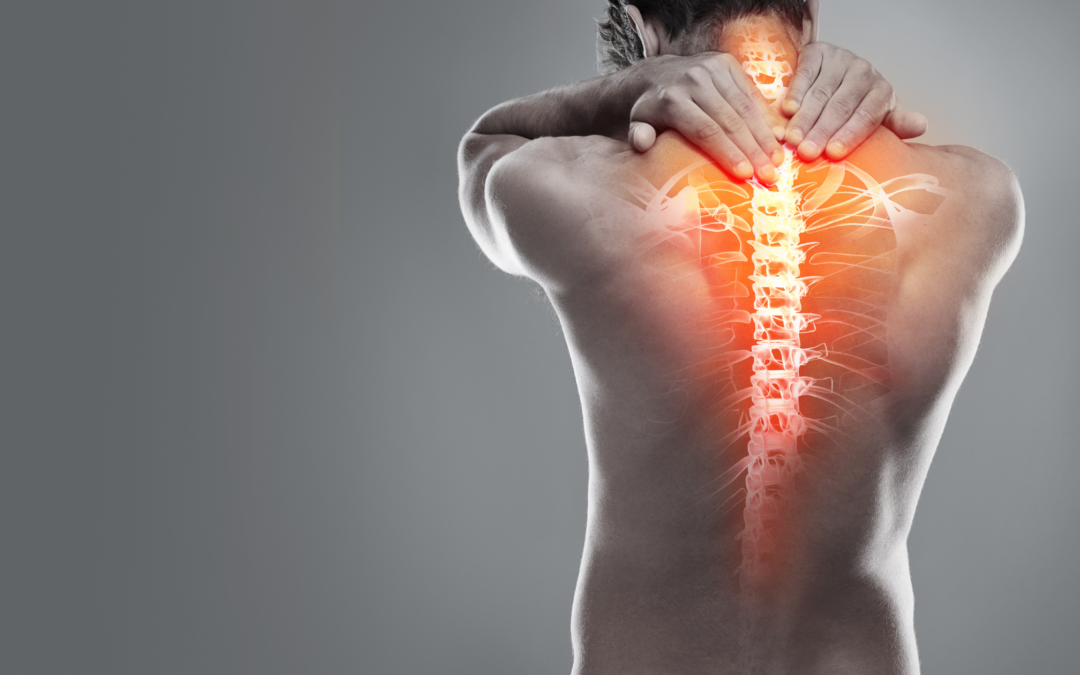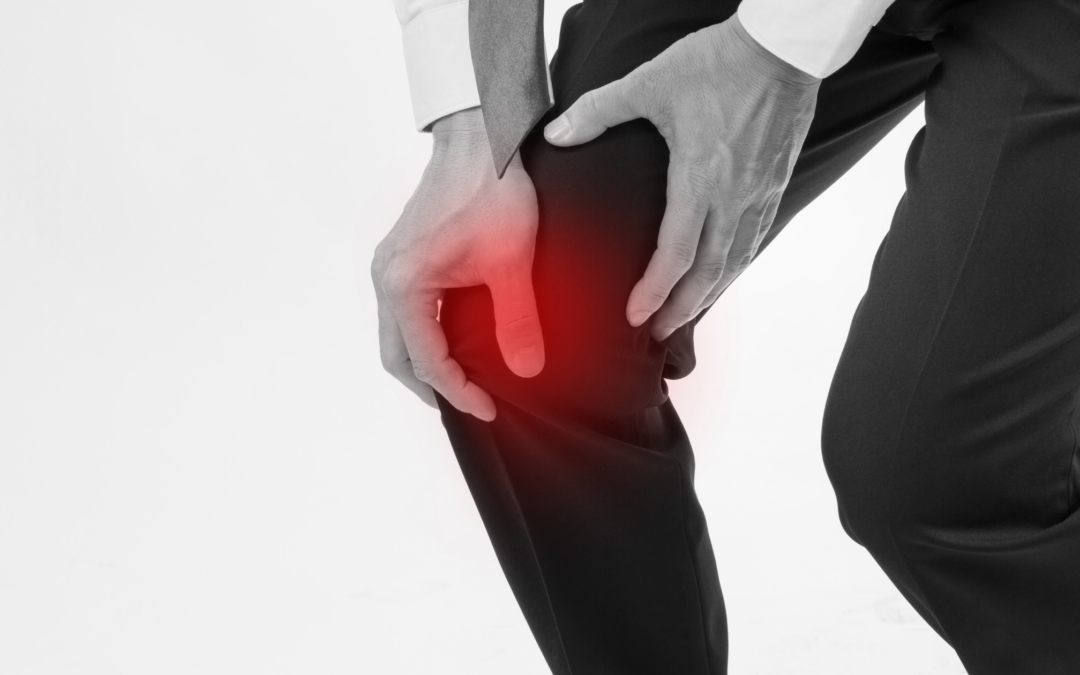
Mar 8, 2023
Chronic pain can affect your quality of life. Pain is considered to be chronic when it lasts longer than 3 months without any indication of improvement. Chronic pain can compromise your mobility, flexibility, and strength, affecting your day-to-day activities which can also lead to mental health issues.
Chronic pain can result from an injury or an underlying condition. The first step in treating chronic pain is identifying the root cause of the pain. Your physician will perform a thorough history, and physical exam and order imaging studies to help determine the pain source.
There are many conventional treatments for chronic pain, but many treatments just mask the symptoms, and surgery may be too invasive or unnecessary. Fortunately, there are minimally invasive treatment options for chronic pain.
Minimally invasive procedures for chronic pain management are less invasive than surgery, hence less pain and recovery time. The goal of these procedures is:
- To help stimulate healing of the underlying injury.
- To reduce the pain symptoms.
- To help the patient return to an active lifestyle and improve quality of life.
Available Minimally Invasive Procedures:
Prolotherapy
This procedure involves injecting dextrose solution to injured areas to stimulate the body to heal. It works by creating a mild inflammatory response, which helps to initiate the healing and strengthening of injured ligaments and tendons.
Platelet Rich Plasma (PRP) injections
Platelets are tiny cells in your blood that contain growth factors that are critical to healing. PRP is a concentrated sample of your own blood containing a high number of platelets. PRP can be injected to injured areas of your body to promote tissue regeneration, decrease inflammation, and encourage new blood vessel formation.
Bone marrow or Adipose (fat) derived cell therapy
Your bone marrow and adipose (fat) are a rich sources of mesenchymal cells, growth factors, and other cells that have tremendous potential for healing and restoring injured tissues. Through a simple outpatient procedure, your bone marrow or fat can be harvested, processed, and re-injected to injured areas of your body on the same day to stimulate healing and repair.
Final Thought
Chronic pain can affect your general well-being, but it doesn’t have to remain that way. Please fill out the form below and visit our website to learn about alternative ways to manage chronic pain.

Feb 20, 2023
Chronic pain in your body can make your life quite devastating. Conditions such as disc herniation, degenerative discs, spinal stenosis, and annular tears can cause intense pain, weakness, and discomfort to your back, thigh, legs, or buttocks.
If you suffer intense pain, you are likely searching for the best pain management solution. Spine surgery is hazardous and can cause irreversible damage to your nerves and spinal system.
The good news is that there are other effective yet minimally-invasive methods you can opt for. Epidural injections and facet joint injections are the most recommended non-surgical options for patients suffering from chronic neck and back pain.
What are Epidural Injections?
Epidural injections are used globally to manage neck and back pain. Traditionally, the physician recommends the treatment for managing neck, back, leg, or arm pain caused by conditions such as:
- Disc herniation
- Annular tear
- Degenerative changes
- Spinal stenosis
The injections contain a potent corticosteroid that has powerful anti-inflammatory properties. The injection can reduce swelling and inflammation. Consequently, the drug relieves local and referred pain. Platelet-rich plasma can also be injected in the epidural space for long term pain relief.
Additionally, epidural injections can be useful in identifying the root cause of pain. A specialist precisely injects around a nerve root or nerve and discovers the exact point of injury or inflammation.
What are Facet Joint Injections?
The facet joints are small joints located in the spine. The primary role of these joints is to allow your spine to move or twist.
Facet joint injections’ main role is to deliver anesthetic or steroids medications to these small joints. Platelet-rich plasma can also be injected into the facet joints to decrease inflammation.
A physician uses these types of injections for therapeutic and diagnostic reasons to manage pain resulting from arthritic or degenerative conditions on the facet joints. In most cases, facet joint injections are indicated in the following conditions:
- Arthritis affecting the facet joints
- Localized neck or back pain
What is the Difference Between Epidural Injections and Facet Joint Injections?
Epidural injections primarily treat pain that radiates from the spine to other parts such as the back, arm, or leg. It is useful in managing pain that occurs due to a specific nerve being inflamed or pinched.
Facet joint injections, on the other hand, treat pain around the facet joints. Mainly the injections are indicated for patients with pain that occurs due to arthritis conditions, or injury to the facet joints.
Both of these injections are done using X-ray guidance and performed with local anesthesia.
Book an Appointment at SDOMG
Don’t let chronic pain make your life miserable. We have specialists with vast experience in epidural injections and facet joint injections. The non-surgical methods are the most recommended in managing chronic back, or neck pain. Contact us to book an appointment with our specialists.

Dec 30, 2022
Chronic pain is pain that lasts for more than 12 weeks. It can be constant pain or pain that comes and goes. This can cause physical discomfort as well as mental health issues. You can experience chronic pain due to:
- Arthritis
- Sports injuries
- Chronic back pain
- Accidents
- Surgeries
Conservative Management of Chronic Pain
There are many options for managing chronic pain, including lifestyle changes and medications, like NSAIDs, over-the-counter pain medications, or opioids. These medicines have many shortcomings, but we’ll highlight the most profound:
- They don’t work for some patients.
- They can have side effects and can be toxic to patients with other underlying conditions.
- Sometimes they have reduced effectiveness, necessitating prescriptions of stronger medications.
However, there are other alternatives that you can use to manage pain, and they include:
Cold and Heat Therapies
Cold and heat are practices that many people use to manage chronic pain. The trick to using cold and heat therapy is knowing when to use them.
Cold therapy
Cold therapy reduces blood flow to the injured area, which slows down swelling and inflammation. In addition, you can apply cold compresses for joint and tendon pain.
Heat therapy
It is more useful when dealing with muscle pain. It eases the pain by increasing blood flow to the area and relaxing the muscle. Heat also reduces lactic acid accumulation, which could increase pain.
Exercise
Exercise relieves chronic pain and can improve strength, mobility, and flexibility over time. When you exercise, endorphins are released which act as natural pain killers. Therefore, it’s essential to find a workout that does not worsen your pain. Chronic pain can affect the quality of life, which can be improved by exercising.
Physical therapy
It is a pain management practice that involves strengthening and stretching exercises, massage, and other modalities, to manage chronic pain and other conditions. Physical therapists will teach you a proper comprehensive home exercise program.
Massage
It is a practice that involves soft tissue manipulation to relax muscles and reduce inflammation.
Shockwave therapy
This device uses sound waves to promote tissue healing. This can be use for muscles, tendons, and joints injuries.
Pain management continues to evolve. Pain management doctors use innovative devices and procedures that can wean their patients off medications. These techniques and devices have been used to successfully treat conditions that were previously difficult to treat.
Get Alternative Pain Treatment From SDOMG
Visit our website to learn more about alternative ways to manage chronic pain. We have a team of qualified certified pain management doctors who will give you quality, non-surgical treatment options to relieve your pain. Fill out this form to request an appointment.

Nov 5, 2022
Older adults are more likely to suffer from pain. Studies reveal that approximately 92% live with at least one chronic condition. As a result, they underreport pain as they see it as part of aging.
While we can associate some uncomfortable sensations in the body with age, it reaches a point when you must seek professional help.
So, when should you speak to your doctor about your pain? Find out more below!
What Types of Pain do Adults Experience?
Various factors can cause pain in older adults. For instance, you’re more likely to suffer from several conditions simultaneously as you age.
Although it can be difficult and often require medical diagnosis, understanding the cause of your pain is essential. Sometimes, identifying the type of pain you’re suffering from helps you know whether you need to see a doctor or not.
Here are some types of pain older adults are likely to experience:
- Back pain due to arthritis or degenerative changes (occurs mostly in the low back and neck)
- Chronic joint pain (such as knee or hip joint pain)
- Musculoskeletal pain
- Peripheral neuropathic pain (typically due to diabetes or postherpetic neuralgia)
When To Talk to Your Doctor About Pain
While most older adults become accustomed to pain, it’s crucial to speak to a doctor once it reaches a particular stage. So, when should you seek professional help?
If You Experience Severe or Intense Pain
You should speak to a doctor if you experience severe pain that causes intense suffering. For instance, if you’re suffering from back pain, talk to a doctor if:
- You experience discomfort, numbness, or weakness
- Pain appears suddenly
- Pain creeps on gradually
- The pain results from a severe blow or a fall
- You have a high fever
If Your Pain Worsens
Sometimes you may experience pain that goes away after a short period or when you use over-the-counter medication. However, you should talk to your doctor if the pain lasts longer than 72 hours.
If Your Pain Disrupts Daily Life
Some older adults tolerate pain because they believe it is part of aging. But sometimes, the pain can interfere with their daily lives (or even their caregivers). For example, it can affect your mood, sleep, work, or self-care.
As a result, patients tend to suffer from anxiety and emotional distress. Therefore, you should speak to your doctor if pain disrupts your daily life.
If You Depend on Over-the-Counter Medications
Over-the-counter medications can provide short-term pain relief to older adults. However, they shouldn’t be use on a daily basis.
Over-the-counter pain reliever use comes with certain risks, including potential misuse or abuse, incorrect self-diagnosis, and increased drug-drug interaction risk. If you can’t go a day without pain relievers, speak to a doctor.
Key Takeaway
Older adults experience different types of pain resulting from various conditions. However, you should speak to your doctor when the pain worsens or disrupts your daily life. If you’re experiencing pain, contact the experts at SDOMG by filling out the form below.

Oct 13, 2022
As one the largest joints in the body, the knees often suffer the most from the wear-and-tear that comes with a lifetime of use (or abuse). Whether damaged by an injury such as a ligament or tendon tear, or simply worn down by years of standing, running, jumping, lifting, etc., the result is often the same: chronic pain, inflammation, and reduced movement.
Depending on the extent of the injury or damage to the knee, patients can often gain some temporary relief from steroid injections that decrease swelling or from other interventional treatments such as hyaluronic acid injections that increase lubrication in the joint. But when these options have been expended, many look to surgery as their last, best hope to repair the damage and bring sought-after pain relief.
But now, non-surgical cellular treatments are providing long-term relief to patients with knee pain by putting the body’s own natural healing abilities to work to undo the damage brought on by injury or degeneration.
How Do Cellular Treatments Work?
Known as regenerative medicine, cellular treatments harness powerful healing properties within the body’s building blocks—its own cells—to help repair and, in some cases, replace injured tissues. These treatments promote healing of injuries to the cartilage in the knee joint, as well as soft tissues such as tendons and ligaments in the knee.
To adhere to Federal Food and Drug Administration (FDA) guidelines, only autologous (from the patient’s own body) cellular products can be used to treat orthopedic conditions. Donor products, including cord or amniotic cells, are not approved to treat knee osteoarthritis or soft tissue injuries in the knee.
Cellular products are taken from the patient’s own blood, bone marrow, or fat (adipose) tissues to maximize the benefits of their unique healing properties:
- Platelet Rich Plasma: Platelets in blood release growth factors and proteins that promote tissue repair, while the plasma carries the hormones, electrolytes and nutrients required to nourish cells during the healing process. Platelet rich plasma treatments can be customized to create specific formulations for each type of tissue being treated (muscle, tendon, ligament, cartilage).
- Cellular Therapy: Cells derived from the patient’s own bone marrow or adipose (fat) tissue called “pericytes” produce molecules that spur the production of new blood vessels, awaken other stem cells and encourage newly forming cells to produce collagen and other proteins essential for creating new healthy tissues. These specific cells can develop into the specific kind of cell needed, whether that be tendon, ligament, cartilage, or bone.
After these products are removed from the patient, they are concentrated and reinjected directly to the injured area to address the degeneration or injury.
Do Cellular Treatments for the Knees Work?
Regenerative medicine practitioners have scores of anecdotal evidence from satisfied patients that support the powerful pain-relieving and healing properties of cellular treatments for the knees.
But because the field of regenerative medicine is relatively new, until recently, there has been a limited amount of clinical data to bolster this anecdotal evidence. We believe the quantitative, controlled data that clinical trials will produce will not only further the use of cellular treatments for orthopedic conditions but will also confirm what hundreds of our satisfied patients have been telling us for years: cellular treatments have helped their bodies heal naturally while allowing them to resume the activities that help them regain their quality of life.
The experts at SDOMG help patients with knee injuries and knee osteoarthritis find the relief they need using expert technology and treatments. To learn more about cellular therapy for knee injuries, contact SDOMG using the form below.

Oct 6, 2022
If you are among the millions of Americans suffering from low back pain, you have probably tried adjusting your lifestyle and other remedies to ease the symptoms. Although it helps upgrade to a high-tech mattress or an ergonomic office chair, the results are not always convincing.
One research by the Association of Academic Physiatrists (AAP) in February 2021 found that how people eat will affect their low back pain. In this post, we discuss the link between Anti-Inflammatory Diet Help and Chronic Pain.
What Does An Anti-Inflammatory Diet Do?
The human immune system activates whenever the body recognizes a foreign object like an invading microbe, chemical, or plant pollen. The process triggers inflammation processes directed at the most threatening invaders.
Inflammation may sometimes persist even when a non-significant foreign invader threatens the body. In this case, inflammation becomes an enemy. Most diseases that plague the body, like heart disease, cancer, arthritis, diabetes, and depression, have roots linked to chronic inflammation.
Foods That Cause Inflammation
Avoid or limit the following foods as much as possible:
- French fries and other fried foods
- Soda and any sweetened beverage
- Margarine, lard, and shortening
- Refined carbohydrates like white bread and pastries
Health Risks of Inflammatory Foods
Unsurprisingly, the same foods that cause inflammation are classified as bad for health. Unhealthy foods will also contribute to weight gain, another risk factor for inflammation. Avoid food components and ingredients that may cause inflammation and increase calorie intake.
Anti-Inflammatory Foods
An anti-inflammatory diet includes food like:
- Olive oil
- Tomatoes
- Green leafy vegetables like collards, kale, and spinach
- Fatty fish
- Nuts
- Fruits like cherries, strawberries, blueberries, and oranges
Benefits of Anti-Inflammatory Foods
Nuts can reduce inflammation and lower the risk of diabetes and cardiovascular disease.
Fruits and vegetables like apples, blueberries, and leafy greens have high natural antioxidants and polyphenols compounds. They may be effective in alleviating chronic pain and helping you live well.
Anti-Inflammatory Diet
Reducing levels of inflammation requires you to aim for an overall healthy diet. Your daily eating plan should follow anti-inflammatory eating tenets by eliminating unhealthy foods. The typical anti-inflammatory diet consists of vegetables, fruits, whole grains, nuts, fish, and healthy oils.
In addition to lowering body inflammation, an anti-inflammatory diet will help you with overall physical and emotional health. Most of these foods effectively boost moods and the overall quality of life.
Reliable Pain Management solutions at SDOMG
Pain can adversely affect your life in a short time. At SDOMG, we offer interventional pain procedures to relieve pain and improve your quality of life. Contact us today to request a consultation with our administrative team. Fill out the form below to get started.





